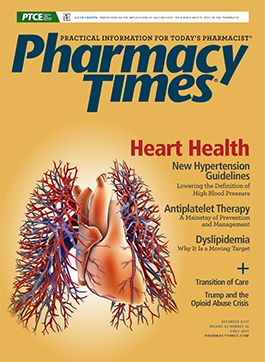Publication
Article
Pharmacy Times
Letter to the Editor
In these articles, the statement “The OnGuard/Tevadaptor system is not considered a closed-system transfer device (CSTD) in its country of manufacture (Israel), and its sale was banned in Sweden as the result of a court ruling” is incorrect and was taken from a source1 that did not provide attribution for its statements.
CLARIFICATION OF STATEMENTS IN:
- “Closed-System Transfer Devices: What Do They Offer?” (Pharmacy Times Health- System Edition. 2017;1[2]:22-26) (Specialty Pharmacy Times. 2016;7[6]:30-33)
- “Closed-System Transfer Devices, USP <800>, and the NIOSH Protocol” (Pharmacy Times Health-System Edition. 2017;1[4]:30-34) (Specialty Pharmacy Times. 2017;8[2]:29-32)
- “Closed-System Transfer Devices: Important Considerations for Pharmacists” (Pharmacy Times Health-System Edition. 2017;6[5]:24) (Specialty Pharmacy Times. 2017;8[4]:38)
To the Editor,
In these articles, the statement “The OnGuard/Tevadaptor system is not considered a closed-system transfer device (CSTD) in its country of manufacture (Israel), and its sale was banned in Sweden as the result of a court ruling” is incorrect and was taken from a source1 that did not provide attribution for its statements.
Based on correspondence from the manufacturer of Tevadaptor, Teva Pharmaceutical Industries, Tevadaptor is approved in Israel as a “closed drug reconstitution and transfer system.” In addition, Tevadaptor has never been banned in Sweden by a court ruling or otherwise.
To add further context to the tests performed by Fred Massoomi, PharmD, FASHP, of Nebraska Methodist Hospital Pharmacy,2 the reader should note that the tests evaluated CSTDs using isopropyl alcohol (IPA) as a surrogate for hazardous drugs (HDs), which was part of NIOSH’s 2015 draft protocol.3 However, NIOSH no longer considers IPA an appropriate HD tracer compound because HDs are low-volatile substances, whereas IPA is a highly volatile solvent. NIOSH has modified the protocol to reflect selection of surrogates whose properties are more representative of currently known HDs.4
One of the articles5 indicates that use of 2-phenoxyethanol as a tracer compound may not fully represent the performance of CSTDs. However, 2-phenoxyethanol is one of the surrogate compounds under consideration in the NIOSH modified protocol.4
The study6 by Dr. Igal Bar-Ilan cited in “Closed-System Transfer Devices: What Do They Offer?” used titanium tetrachloride to evaluate the integrity of several CSTDs. Of note, titanium tetrachloride is not among the surrogate compounds under consideration in the NIOSH 2016 Protocol.4
Sincerely,
Michael R. Page, PharmD, RPh
REFERENCES
- Dash TA. Comment on the Centers for Disease Control and Prevention Notice: a vapor containment performance protocol for closed system transfer devices used during pharmacy compounding and administration of hazardous drugs. Regulations.gov website. regulations.gov/document?D=CDC-2015-0075-0026. Published March 9, 2016. Accessed October 5, 2017.
- Massoomi F. Comment on the Centers for Disease Control and Prevention Notice: a vapor containment performance protocol for closed system transfer devices used during pharmacy compounding and administration of hazardous drugs. Regulations.gov website. regulations.gov/document?D=CDC-2015-0075-0027. Published March 9, 2016. Accessed October 5, 2017.
- National Institute for Occupational Safety and Health. A vapor containment performance protocol for closed system transfer devices used during pharmacy compounding and administration of hazardous drugs. Fed Regist. 2015;80(173):53802-53803. federalregister.gov/documents/2015/09/08/2015-22525/a-vapor-containment- performance-protocol-for-closed-system-transfer-devices-used-during-pharmacy. Published September 8, 2015. Accessed October 5, 2017.
- NIOSH. A performance test protocol for closed system transfer devices used during pharmacy compounding and administration of hazardous drugs. Centers for Disease Control and Prevention website. cdc. gov/niosh/docket/review/docket288a/pdfs/APerformanceTestProtocolforClosedSystemTransferDevices.pdf. Accessed October 5, 2017.
- Page MR. Closed-system transfer devices: important considerations for pharmacists. Pharmacy Times Health-System Edition. 2017;6(5):24.
- Bar-Ilan I. Comparative study of vapor containment efficiency of hazardous drug transfer devices. Equashield website. equashield.com/wp-content/uploads/2015/12/008-Equashield-Closed-System-Transfer-Device- CSTD.pdf. Accessed October 5, 2017.







